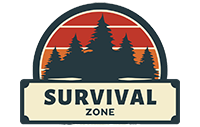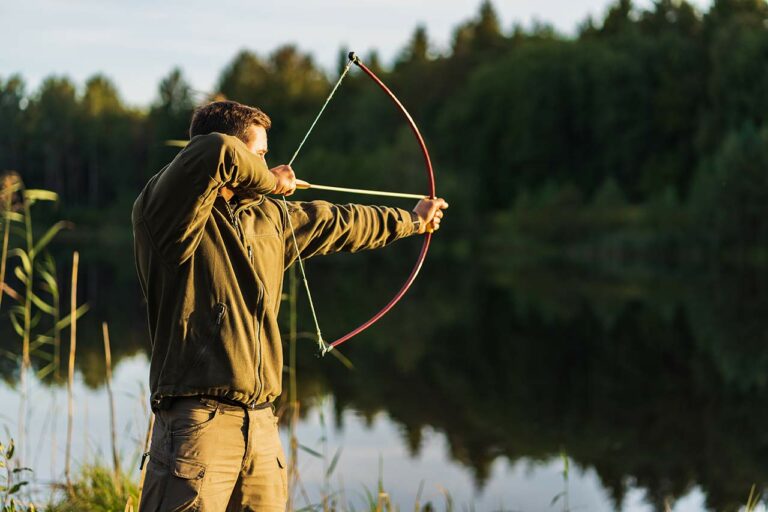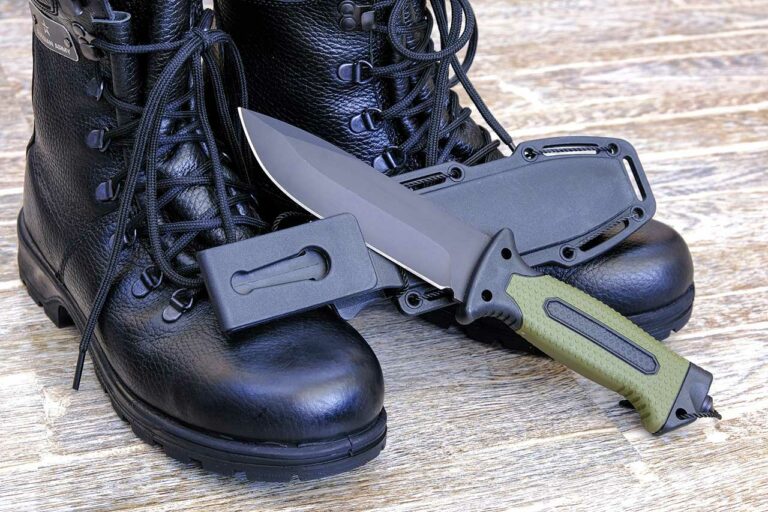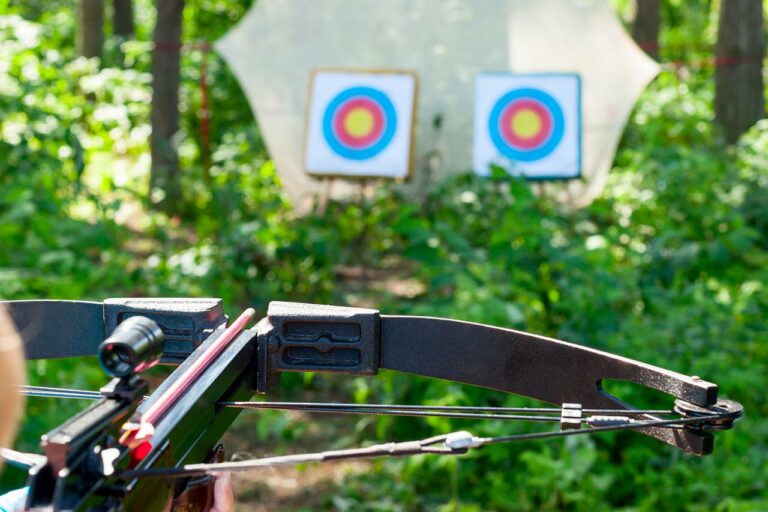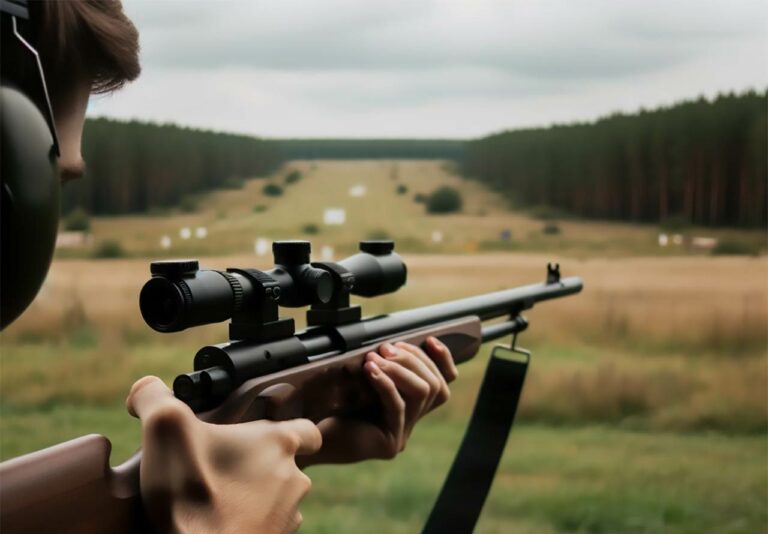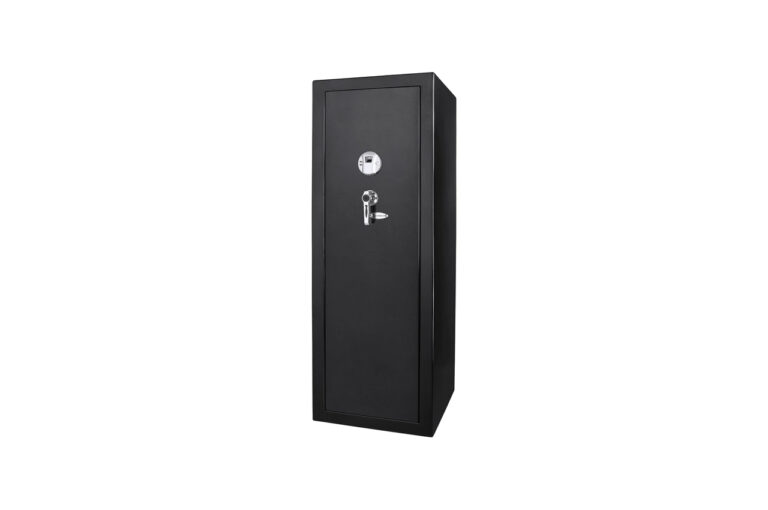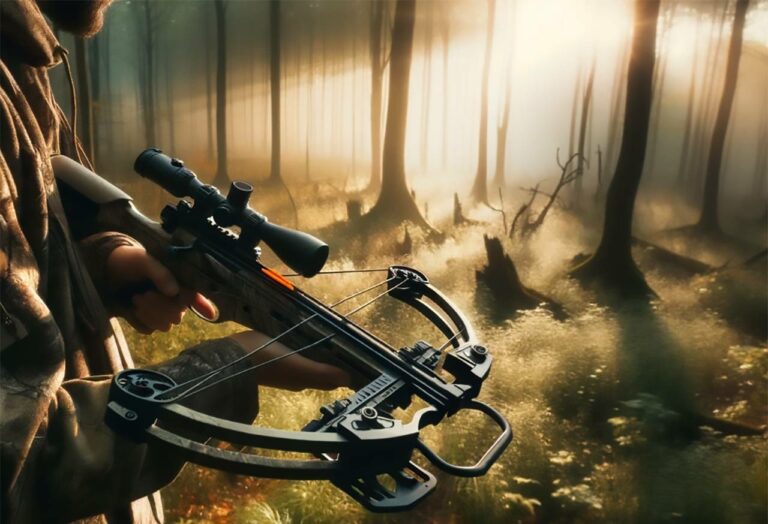How To Set Up A Safe Backyard Air Rifle Range For A Secure Shooting Space
If you want to be ready to use an air rifle when you actually need one, you need to put in the time beforehand. That means practice, and practice means having a place to practice.
One way to make it simpler to get in your practice time is to have an air rifle range close at hand. For instance, say, right in your backyard.
By establishing your own backyard air rifle range, you can get in your shots whenever you have a spare few minutes, honing a critical skill that could make all the difference in a survival scenario.
Safety, precision, and a keen understanding of your equipment are not just guidelines, they’re necessities when every shot must count. So, let’s talk about setting up a safe, practical range where you can sharpen your shooting acumen, ensuring that if the time ever comes where your survival depends on a well-placed shot, you’re ready.
Local Laws and Legality
When setting up a safe backyard air rifle range, it’s essential to be aware of your local laws and the legality of such activities. Since air rifle regulations vary across the United States, you should always check your state and local laws before building a range on your property.
In many areas, it’s generally allowed to shoot airguns in your own backyard if you’re at least 18 years old and have a permit. However, some jurisdictions may have restrictions, so it’s crucial to stay informed about your specific location’s rules and regulations.
Checking Your Local Laws
Start by researching your state’s laws on air rifles, non-powder guns, and BB guns. Then, consult your local laws for additional regulations that may apply in your city or county. Remember that legal guidelines may change over time, so it’s wise to regularly update yourself on these matters to avoid any potential issues.
Getting a Permit if Needed
Some locations may require a permit to shoot an air rifle in your backyard. If this applies to your area, be sure to obtain the necessary permit, and comply with any conditions that come with it. Always keep the permit handy, as you may need to present it to authorities if questions arise.
Informing the Neighbors
While it’s unlikely to be a legal requirement to inform your neighbors that you are building an air rifle range in your backyard, it can be a good idea. Keeping them in the loop can help avoid potential conflicts and misunderstandings, such as someone calling the cops when they hear shooting.
Setting Up The Shooting Range
Before you start anything, check your local laws and regulations to make sure they permit backyard shooting ranges. Plenty of places don’t. Once you’ve confirmed you’re legally in the clear, you can get started on actually building your range.
1. Find a suitable location with plenty of space for shooting. You’ll need at least 15 yards to have a good, safe shooting range, with 10 of these yards used for the actual space and 1-2 yards for target placement. Ensure you have enough room to comfortably lay down and store ammunition or a gun rack.
2. Determine the layout of your range. This might include different lanes featuring multiple targets at varying distances to challenge your shooting prowess. You may want to incorporate various shooting positions like standing, kneeling, sitting, and prone into your range design for added complexity and skill-building opportunities. It’s a good idea to know everything you want to do with your range before moving onto step 3.
3. Gather the essential components. The most important part of a shooting range is the backstop, which prevents pellets or BBs from going astray and damaging property or causing harm. A heavy-duty cardboard sheet, a sheet of steel, or a dirt berm can serve as an effective backstop. If possible, position the backstop so that it doesn’t face any occupied spaces like a neighbor’s yard or common areas.
4. Set up your targets. Targets can be made from a variety of materials, such as paper, metal, or even reactive materials that emit a visual or auditory signal upon impact. Popular target styles include circles, squares, and silhouettes. Attach these to your cardboard or steel backstops.
5. Consider adding other optional features to enhance your range, such as a shooting bench or shooting mat. These can provide extra comfort and support while shooting. Another useful addition is a target retrieval system, which allows you to bring the target closer for inspection without walking back and forth.
Considerations for Space and Location
When setting up a backyard air rifle range, it’s essential to consider the space and location to ensure safety and effectiveness.
To get a feel for your space, start by measuring the dimensions of your backyard. If you have anything less than 20 yards in one direction, you may not have enough room for a truly effective range.
While measuring your space, it’s crucial to evaluate the area surrounding your property. If your 20 yard stretch points toward an inhabited space, like a neighbor’s home or yard, a park, or any other place where people might gather, it’s an unsafe location, so look for something else. It’s never safe to set up a shooting range aimed at inhabited places, even with a good backstop.
Measurements and Boundaries
Properly marking the boundaries of your air rifle range will not only maximize safety, but will help you improve your shooting skills. Depending on the size of your backyard, you can have targets set up at various distances to simulate real-life scenarios. While targets stretching out to 50+ yards may not be feasible for all backyards, you can still keep things reasonable and adjust according to your available space.
When planning the layout of your range, make sure to designate specific areas for each shooting position. Organize your shooting lanes in a way that allows for smooth and efficient transitions between them. This ensures that you can practice switching between standing, kneeling, sitting, and prone positions without disrupting your flow.
Here’s a quick overview of measurements and boundaries to keep in mind:
- Minimum range length: 15 yards
- Actual shooting space: 10 yards
- Target placement: 1-2 yards
- Room for shooting positions: Ensure enough space for standing, kneeling, sitting, and prone
Remember, setting up a backyard air rifle range should prioritize safety while still allowing you to practice and improve your skills. Properly measuring and defining boundaries will help to achieve this balance.
Considerations for Backstops
An essential element of maintaining safety in your air rifle range is to use a proper backstop to prevent ricochet. A well-constructed backstop can effectively absorb the air rifle pellets and minimize the chances of ricochet, enhancing the overall safety of your setup.
So, what materials are best for an airgun backstop?
Materials that are durable, dense, and able to absorb pellets’ energy work best as backstops for airguns. Some popular choices include:
- A pellet trap specifically designed for air rifles, which can handle the pellets’ higher velocity and power.
- Stacked cardboard layers, which are effective at stopping pellets while reducing the risk of ricochet.
- Rubber mulch or recycled tire material, which absorbs impact well and can be easily contained in a wooden box.
Always ensure your backstop is large enough to cover the entire target area, reducing the chance of pellets missing the backstop and causing harm or damage.
Maintaining Safety While Shooting
Once you have your air rifle range built, it’s time to get some practice. And part of that practice includes air rifle safety. Here are some of the most important safety rules for a home air rifle range:
Always treat your airgun as if it’s loaded.
This means being mindful of where the muzzle is pointed, even when you’re certain it’s not loaded. A critical rule to follow is to keep the muzzle pointed in a safe direction at all times.
Make sure everyone participating in shooting wears protective glasses to prevent eye injury.
This extends to spectators, family members, and pets that might wander into the vicinity. To further protect family members and pets, set up a designated shooting area that is properly enclosed, ensuring they do not unwittingly enter.
Be mindful of your surroundings when shooting.
Establish clear boundaries for participants and spectators, and let people on your property know when you plan to start shooting. This will help keep everyone safe.
Remember you’re responsible for anyone who enters your shooting range.
While you may not want to go to the extreme of getting informed consent from anyone who enters your shooting range, you should be aware that you may be responsible for anything that happens to a visitor while they’re there.
It’s something to keep in mind if you’re going to allow other people to practice on your backyard range.
Proper Use and Practice
When setting up and using your backyard air rifle range, it’s important to follow proper safety measures for an enjoyable and incident-free experience. By following some smart guidelines, no one will get hurt and your range will go off without a hitch.
Safety First
Always identify a safe direction to shoot and be aware of what’s beyond your target. Make sure spectators, family members, and pets cannot unintentionally enter the shooting range.
Training and Practice
Regular practice is essential for improving your accuracy and overall air rifle handling skills. Start with a comfortable shooting position. A bench and table setup slightly elevated from the targets is ideal, as it helps reduce ricochets and makes the backstop more effective.
When it comes to training exercises, consider the following:
- Plinking: This informal target practice involves shooting at small, reactive targets like cans, plastic bottles, and spinners. Plinking is a fun way to develop your accuracy and muscle memory. Just remember to clean up the debris afterward.
- Precision shooting: Focusing on hitting specific target zones, such as scoring rings on paper targets or small bullseyes, is excellent for refining your aiming and tracking skills.
- Speed drills: Develop your rapid-fire and follow-up shot capabilities through exercises like shooting multiple targets in quick succession.
Maintain a consistent and mindful practice routine. Keep track of your progress, celebrate your improvements, and always prioritize safety. Proper use and practice will ensure your backyard air rifle range becomes an enjoyable, skill-building pastime.
Disposing Consumables Safely
When it comes to having your own backyard air rifle range, you have the added responsibility of disposing of consumables wisely to maintain a clean, safe environment. To properly dispose of consumables:
Use a pellet trap to catch pellets after they’ve been fired. This not only prevents the pellets from ricocheting but also makes it easier to collect and dispose of them. A quality pellet trap will minimize the risk of pollution and keep your backyard tidy.
Use everyday items like cardboard, cardboard boxes, and newspapers for targets. These materials are perfect as they are cost-effective and environmentally friendly. Cardboard can easily be cut into shapes, and layering newspapers can create a solid target backing. After using these items as targets, don’t forget to crush them down and recycle them.
Cans are another great target option. They can be lined up, and the satisfying sound of a hit can provide instant feedback. Be sure to collect the cans after target practice, crush them if you wish, and recycle them accordingly. This way, you’re not only having fun with your air rifle but also doing your part in keeping the environment clean.
Always keep a garbage bin or bag at your air rifle range to collect all used consumables, ensuring a clutter-free shooting space. Make it a habit to clean up after each shooting session to maintain a safe and enjoyable backyard air rifle range.
Frequently Asked Questions
What is a safe minimum distance for an air rifle?
Safety should always be the priority when setting up an air rifle range. A minimum distance of 15 yards between the shooter and the target is recommended for a safe shooting experience. Within this distance, 10 yards should be allocated for the shooting space, 1-2 yards for target placement, and additional space for shooting positions, ammunition storage, and any gun racks.
What is the effective range of an air rifle?
The effective range of an air rifle largely depends on the type and caliber of the gun, as well as the shooter’s skill and experience. However, a basic guideline would be:
- For low-powered air rifles (.177 and .22 calibers), an effective range is generally within 20-35 yards.
- For medium-powered air rifles and higher calibers, the effective range may extend to 50 yards or more.
Keep in mind that backyard air rifle ranges will likely have limited space, so be prepared to adjust the target distance accordingly when setting up your shooting lanes.
Can plywood stop a pellet?
Plywood can stop pellets, but its effectiveness depends on the thickness, the density of the wood, and the power of the air rifle being used. For low-powered air rifles, a single 3/4-inch plywood sheet can be sufficient to stop pellets. However, for medium or high-powered guns, it might be necessary to use multiple layers of plywood or opt for a denser material like solid wood or a pellet trap designed for higher velocities.
Remember to check the backstop periodically for signs of wear, and replace as necessary to maintain safety. By maintaining your backyard air rifle range carefully, you can have a safe, functional range for years to come.
